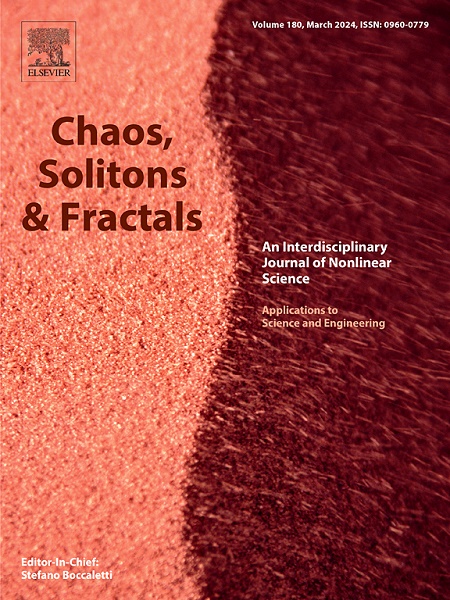Design of fractional innate immune response to nonlinear Parkinson's disease model with therapeutic intervention: Intelligent machine predictive exogenous networks
IF 5.3
1区 数学
Q1 MATHEMATICS, INTERDISCIPLINARY APPLICATIONS
引用次数: 0
Abstract
In this study, a novel application of intelligent machine predictive exogenous neuro-structure optimized with the Levenberg-Marquardt (IMPENS-LM) algorithm is presented to analyze the dynamics of fractional innate immune response to nonlinear Parkinson's disease propagation considering the impact of therapeutic interventions (PDP-TI). A novel design of the fractional PDP-TI model is constructed with a nonlinear system of five differential compartments representing healthy neurons and infected neurons, extracellular α-syn, and both active and resting microglia. The presented IMPENS is formulated with neuro-structure of nonlinear autoregressive exogenous neural networks with efficient backpropagation of LM algorithm to solve the scenarios of nonlinear fractional PDP-TI model by varying neuron infection rate, survival percentage of具有治疗干预的非线性帕金森病模型的分数先天免疫应答设计:智能机器预测外源性网络
在本研究中,提出了一种基于Levenberg-Marquardt (IMPENS-LM)算法优化的智能机器预测外源性神经结构的新应用,以分析考虑治疗干预(PDP-TI)影响的分数先天免疫反应对非线性帕金森病传播的动力学。构建了一种新型的分数阶PDP-TI模型,该模型由5个不同的区室组成,分别代表健康神经元和感染神经元、细胞外α-syn细胞以及活跃和静止的小胶质细胞。通过改变神经元感染率、受感染神经元死亡后α-syn的存活率、小胶质细胞密度、受感染神经元聚集后α-syn的死亡率、受感染神经元聚集后α-syn的死亡率等因素,采用非线性自回归外源性神经网络的神经结构和高效的LM反向传播算法来求解非线性分数阶PDP-TI模型。以α-syn为靶点的治疗方法与活化小胶质细胞湮灭率、神经元和小胶质细胞凋亡率等固定值的比值。IMPENS-LM算法运行在分数阶PDP-TI系统的合成数据集上,这些数据集是通过Grunwald-Letnikov分数阶有限差分数值计算范式生成的。利用IMPENS-LM技术进行了大量的数值实验,从基于mse的迭代适应度学习曲线、绝对误差分析、误差自相关图和误差直方图等方面分析了PDP-TI模型在不同接近度、复杂度和统计度量下的动力学行为,以验证随机解算器在各种分数阶上的有效性。
本文章由计算机程序翻译,如有差异,请以英文原文为准。
求助全文
约1分钟内获得全文
求助全文
来源期刊

Chaos Solitons & Fractals
物理-数学跨学科应用
CiteScore
13.20
自引率
10.30%
发文量
1087
审稿时长
9 months
期刊介绍:
Chaos, Solitons & Fractals strives to establish itself as a premier journal in the interdisciplinary realm of Nonlinear Science, Non-equilibrium, and Complex Phenomena. It welcomes submissions covering a broad spectrum of topics within this field, including dynamics, non-equilibrium processes in physics, chemistry, and geophysics, complex matter and networks, mathematical models, computational biology, applications to quantum and mesoscopic phenomena, fluctuations and random processes, self-organization, and social phenomena.
 求助内容:
求助内容: 应助结果提醒方式:
应助结果提醒方式:


